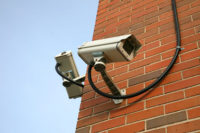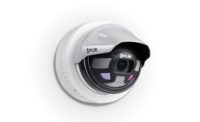Designing a security system that is accurate and cost-effective for the outdoors has been an elusive challenge for the security industry. Proven technologies are now available that are specifically designed to accurately detect in a wide range of outdoor environments while addressing the core issue of nuisance alarms. The good news is that these solutions are also surprisingly affordable. In fact, with the right approach overall project costs can be dramatically lowered, in some cases by as much as 50 percent, even as security performance increases.
The key to lowering costs in the outdoors is directly related to the technology that also gives these systems their accuracy. Making intelligent video effective for outdoors requires technology specifically designed to address the outdoor variables. Unlike indoor video systems, which are designed to operate in static environments, outdoor analytics must contend with an environment that is constantly changing.
The key to lowering costs in the outdoors is directly related to the technology that also gives these systems their accuracy. Making intelligent video effective for outdoors requires technology specifically designed to address the outdoor variables. Unlike indoor video systems, which are designed to operate in static environments, outdoor analytics must contend with an environment that is constantly changing.
Cameras are mounted high on poles which shake from even a slight wind or vibration, causing the camera to move along with the entire scene. Clouds are moving across the sky, creating shadows on the ground that appear to the camera as moving objects. Trees and their leaves will flap in the breeze, further creating the appearance of moving objects. When you add in snow, rain, humidity and dust, such a dynamic environment will wreak havoc for analytics not intended to operate under such conditions.
In the past, when indoor video analytic solutions have been misapplied for use outdoors, they have led to such a high rate of nuisance alarms that they had to be “de-tuned” to avoid overwhelming security teams with phantom alerts. This de-tuning resulted in a great reduction in camera range and accuracy; in some instances these systems lost so much security credibility from mis-detects and nuisance alerts that they were shut off completely.
Placing significant processing power inside the camera itself enables image processing that makes outdoor video detection both accurate and cost effective. Such processing resources make it possible to analyze the full visual detail of every video frame, eliminating – at the source – all the impediments that would otherwise trigger nuisance alarms. This is accomplished through a high degree of on-board image processing in advance of the analytics, a critical first step for making outdoor video analytics accurate and reliable. Such processing – which typically requires multiple processors embedded into the camera - first stabilizes the image for camera motion, adapts to variables such as changing lighting, fog, rain, snow and sandstorms, and filters variables such as small animals, blowing debris, trees moving in the breeze and reflections from water, while maintaining a high probability of detect throughout.
This is where economics enter the equation. The same image processing that gives these systems their detection accuracy also gives them extended range and area coverage – in many cases three times as much. As a result, there is a substantial project cost savings – typically on the order of 50% – from the elimination of the extra cameras and poles, construction, trenching, power and network connectivity that would have otherwise been required. In fact, these infrastructure costs can be the most expensive portion of an outdoor video deployment.
Deploying cameras with sufficient processing and embedded analytics at the edge also eliminates extra servers, encoders, and peripheral equipment. The elimination of these additional costs directly reduces expenditures related to the design, installation, and ongoing maintenance and labor, expenditures which can easily exceed initial hardware purchases.
Most important is the significant manpower efficiencies that are realized when operators are no longer responding to nuisance alarms. Reliable security automation drives focused attention on issues of relevance even when spanning large outdoor areas. Tying security personnel together with accurate information is the key that unlocks tremendous value for the $100B manpower market.
Applying the right technologies to outdoor video applications can transform the performance and economics of outdoor security. The result is a system that is trusted, accurate, and surprisingly cost efficient.

